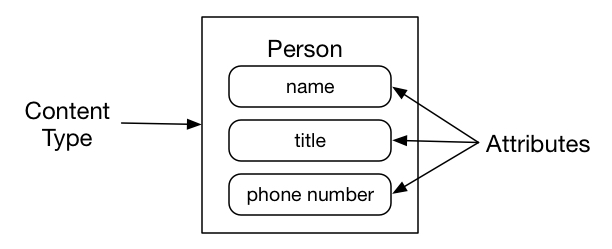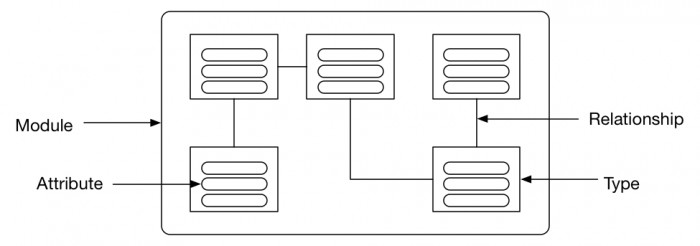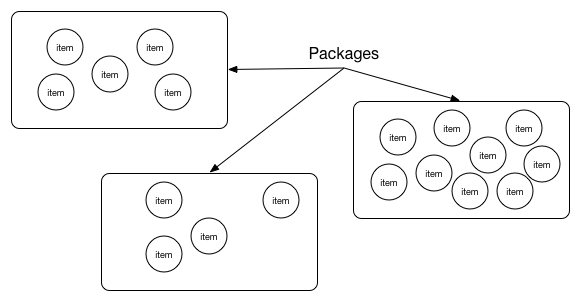Elements of a Content Model
Content connects the business with its customers. It is the message that gets delivered as part of those right-time experiences at every touchpoint in the customer journey. However, as an industry, we failing to deliver those right-time customer experiences. We do not design for content. There is no content model. Why is that?
A large part of the problem is that our content is not intelligent enough to do all things we need it to today. Content needs to be responsive, adaptable, accessible, translatable, machine readable and more, to have a fighting chance of being delivered as part of a right-time experience, at scale and at speed. However, the majority of content available today does not have the intelligence “designed in” to make it easy for the business to deliver even the most basic content-driven experience. So what do we need to do?
Take a step back. Focus on the content. If experiences define our content needs, then experiences bound the problem. If technology enables our content processes, then technology executes the solution. What’s missing? Design. We need design to solve the content problem within the context of experiences. Design makes our content more intelligent. Content modelling is the time and place for designing intelligent content.
Content modeling and the Content Model
Content modeling takes a structure first approach to designing content. The outputs are content models. The outcome is a shared understanding of content for both humans and machines.
Content models are created by people, not machines. Content models are a snapshot of the structural and semantic relationships that exists between key content types, or more specifically:
A content model is a formal representation of structured content as a collection of content types and their inter-relationships.
Content modeling creates content models. It’s a creative design time activity. Things get interesting because there is no one right way to perform content modelling. Content modeling designs a solution (content model) to problem (unintelligent content) within a context (experiences). By the same token, there are many different forms that a content model can take. From spreadsheets, to documents, to diagrams, to post it notes, and more. Half the challenge is knowing which approach to take to content modelling and selecting the content model right form(s) for use within your team(s).
But let’s take that step back and start small by kicking off with some definitions of the key elements of a content model.
Types and Attributes
A content type is an information asset that is valuable to the business. Content types are the information nouns that resonate both across the business and with your customers. Within news and entertainment, you’ll see content types for articles, films, and artists. In pharma and healthcare there are doctors, patients, medicines, and cancer types. Moving into finance we have accounts, loans, credit cards, and mortgages. And cross cutting everything you’ll bump into press releases, promotions, and contacts. It all depends upon the domain in which you are working and what value you place on those content types within your business. Just remember, a content type is an information asset that adds value and purpose to the business.
A content type has a collection of attributes that describes its essential characteristics. For example, the content type for a Person may have a name, title, and phone number. These attributes collectively define what properties make up the content type Person.
Relationships and Modules
Where attributes define the structure within a content type; relationships express the way content types are inter-connected. Consider two content types: article and magazine. How are they related? Do magazines exclusively own their articles? If so, are they responsible for article creation and ultimate destruction? Can an article exist without a magazine? That’s one kind of relationship. Maybe articles can be a part of many different magazines and/or in other publications such as books, blogs, and case studies. Again, that’s a different kind of relationship with different lifetime considerations between the content types. Or is a magazine a special kind of article, inheriting all its essential characteristics (i.e. attributes) and adding a few more of its own such as magazine editor and issue number. Yet again, another kind of relationship.
There are many different kinds of relationships that can be applied within a content model to add structure and meaning. Structure and meaning make our content more intelligent. The important point to takeaway is that the design and build of intelligence into our content is a conscious effort made within the context of experience-driven requirements.
Content models can get pretty big. When they do, we need a way break them sensibly down into a smaller, manageable pieces. Content modules are those pieces.
Not all content type are the same. Some content types will have stronger relationships with other content types. Fortunately, we can take advantage of this natural cohesion between content types to place them into modules. A module is just a collection of content types that fit well together. For example, domain related article and magazine content types may be placed into one module and whilst contact and location best fit within another. For larger content models, modules are an organising mechanism for grouping highly cohesive content types together.
Items and Packages
Content types, attributes, relationships and modules are the result of structure first, design time activities. They add both structure and meaning to content. They make content intelligent. However, content models are predominantly design time organising artefacts. Once you have the intelligence, what about the actual content?
Content items are the physical pieces of content that are created from content types. If the content type is the cookie cutter, then content items are the actual cookies. All cookies are created from same cookie cutter, with all the attributes that we’ve defined and designed within our content model.
Content production creates content items from content types. Content management manages those content items based upon the intelligence we’ve designed and built into the content model. Content delivery distributes content items everywhere they need to be.
Content packages are collections of content items. How and why content items are packaged together depends upon what you’re trying to achieve. Content packages are created into order for content to be responsive, adaptable, accessible, translatable, and so on. Content packages provide a convenient way to describe a collection content items.
Where next?
• Types and Attributes
• Relationships and Modules
• Items and Packages
• Glossary



